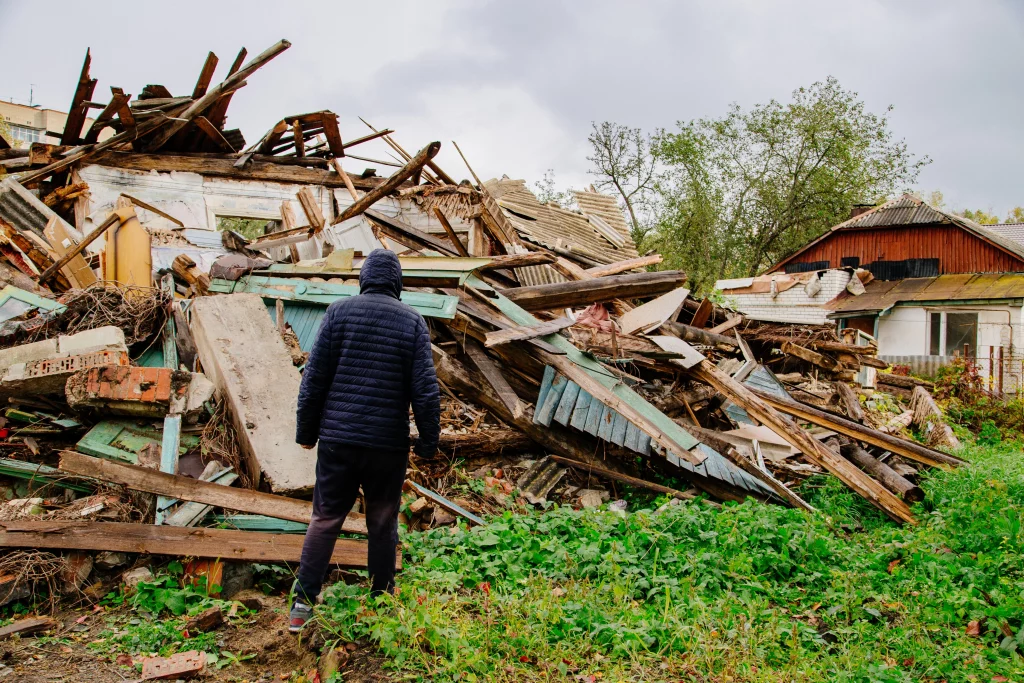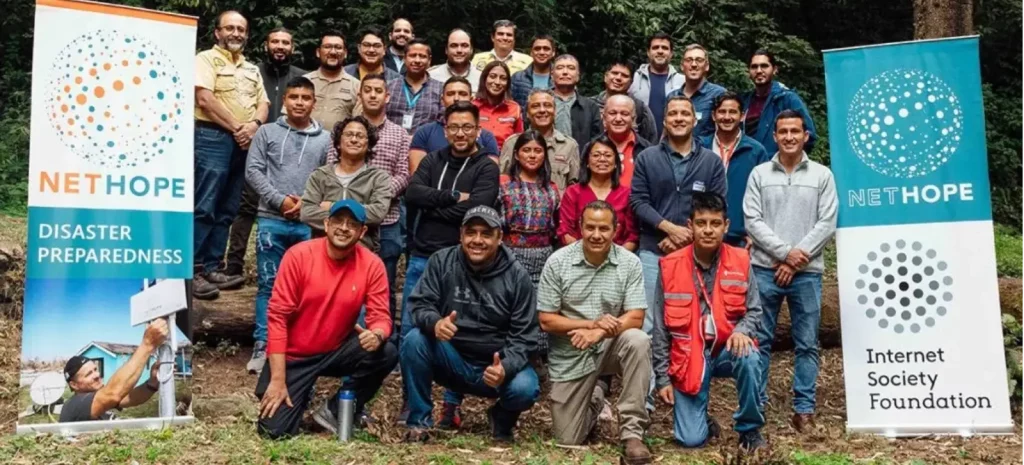In today’s world, the growing risk of natural and climate-related disasters is causing more and more disruption to people’s lives. These disasters often lead to loss of Internet connectivity, leaving individuals isolated from their loved ones and from vital information during times of crisis.
Using the Internet to support resiliency and disaster management has become increasingly essential for communities to prepare for and reconnect after natural disasters strike. But how?
The Internet Society Foundation considers that there are three crucial elements to a resilient network: deploying resilient Internet infrastructure, ensuring readiness and re-establishing connectivity post-disaster, and strengthening capacity within communities to maintain and repair Internet infrastructure. Our Resiliency Grant Program, supports projects that ensure readiness of local communities to deploy, maintain, and repair Internet infrastructure, and re-establish connectivity in communities affected by natural disasters.
This article reviews the ways technology can be employed to emphasize the importance of open access to Internet-connected resources to speed recovery, mitigate risk, and better prepare for natural disasters.

What is disaster response?
According to the US Federal Emergency Management Agency, disasters are recurring events with four phases: Mitigation, Preparedness, Response, and Recovery:
- Mitigation: Taking active measures through interconnected communication and devices to reduce the risks associated with natural disasters. This covers everything from creating fire-resistant zones in wildfire-prone areas to improving urban infrastructure building codes for structural integrity during a tornado. For Internet resiliency, this might look like hardening data centres or Internet Exchange Points (IXPs) against environmental threats or fortifying sub-sea cables or stations.
- Preparedness: Meeting with essential stakeholders and leaders to establish a plan of action. This may include training emergency personnel, conducting disaster drills, or establishing evacuation plans reflected in geolocation apps and websites.
- Response: Active, interconnected systems that alert emergency services, update relief operations on current conditions, digitally organize emergency assistance for those affected by disaster are crucial during the response phase. Even a simple social media message informing where to meet to reconnect with lost family members makes a significant impact.
- Recovery: Having resilient Internet infrastructure in place directs efforts to high-demand, short-term recovery efforts like housing and food, then redirects to long-term issues like infrastructure repair and economic recovery.
An emergency or disaster management team, plan, or advisor will use these four essential pillars in harmony to facilitate recovery from current disasters and track learnings so that proactive steps can be taken in the future.
What roles does the Internet play in disaster response?
Without the ability to exchange crucial information about recovery updates or where, for example, a flood is heading next, potential damage can grow exponentially.
The Internet is a tool for this sharing of information. It empowers managers and key figures to respond better to emergencies.
Some of the more well-known examples of technology in humanitarian aid and disaster relief are listed below.

Disaster preparedness programming
NetHope Inc. is a global consortium of over 60 nongovernmental organizations that specializes in improving information technology and connectivity among humanitarian organizations in areas affected by disaster. As part of their 2021 Resiliency Grant from the Internet Society Foundation, they worked alongside partners, including Internet Society chapters in Ghana, Nicaragua, Guatemala, and Panama to deliver emergency and disaster telecommunications trainings. NetHope organized three in-person trainings with both participant and Train-the-Trainer components. Over 250 participants from academic, government, private, nongovernmental and international organizations joined trainings over the course of their project.
Connecting affected individuals with rescue and relief services
Following the 7.8 earthquake in Nepal, teams from Cisco’s Tactical Operations (TacOps) jumped into action using mobile networking technology, including cloud-controlled Meraki technology, to reestablish interactivity via a temporary Internet. The result was a quick distribution of core services to save lives and structures.
Leveraging the Internet for early warning systems and disaster preparedness
Introducing IoT (Internet of Things) connectivity provides incredible insights into disaster preparedness. Everything from EWS (early warning system) notifications to cloud-connected doorbell cameras function as sensors that can inform users of potential disasters. In 2020, 93.65% of the population across 23 UN countries exposed to disasters were protected due to IoT and Internet-connected EWS notifications.
Disseminating information to spread awareness
The Internet is a foundational disaster management technology that empowers communities by enabling them to disseminate information about local shelters, essential services, current recovery efforts, and preventative notifications. In addition, when a disaster is over, updates about recovery and how to plan for possible future disaster are prepared, the Internet is the same place where this information can be shared with everyone.
What are the challenges and limitations of using the Internet during disasters?
Despite the numerous benefits of Internet technology in disaster management, some risks and challenges must be overcome. Finding ways to resolve power and network infrastructure can be difficult, given that storms and other natural disasters often damage or affect these systems.
On top of infrastructure concerns, attention must be paid to cybersecurity and sensitive data. During the chaos of a natural disaster, there is a risk that potential “bad actors” could take advantage of the situation . For example, the Johns Hopkins Whiting School of Engineering teaches future engineers to prepare infrastructure so it is more resilient during weather emergencies, given the uptick in hacking attempts based on historical data.
The future role that the Internet could play in emergency management and disaster response
Looking to the future, the Internet’s role in everything from preventative planning and mitigation to response and recovery will only grow. The Internet is needed to connect communities, volunteers, agencies, NGOs, and government-led efforts to ensure the most efficient delivery of services on the ground.
Empowering communities and facilitating the dissemination of accurate information in real time are also key components of recovery efforts. The greater the evolution of pre-warning systems and sensors, the more likely communities will rely on Internet-connected devices to provide the much-needed “heads-up” that populations need to prepare, respond, and get to safety.
Conclusion
The complexities of managing disaster response technologies are essential to the safety and well-being of people around the world. The Internet offers a supportive tool, making efficient emergency and disaster management more attainable and human-centered.
With ongoing advancements in newer technologies, the expansion of Internet-connected structures and devices, and the strategic implementation of robust networks, these technologies will become even more foundational to effective disaster preparedness, response, and recovery. The Internet Society Foundation’s Resiliency Grant Program will continue to support communities worldwide to prepare for, repair, maintain, and reconnect to the Internet quickly after natural and climate-related disasters strike.
